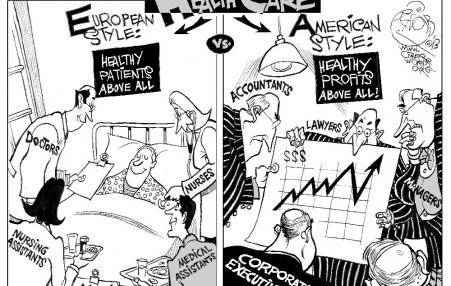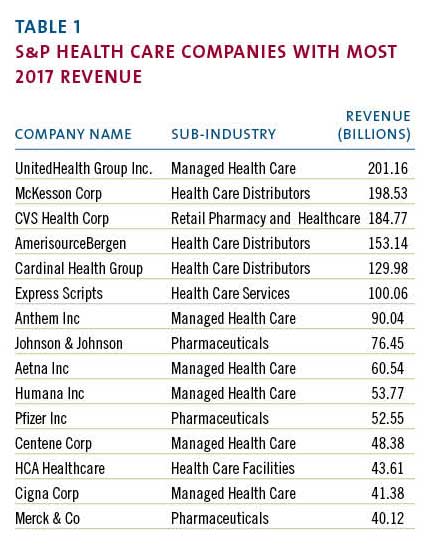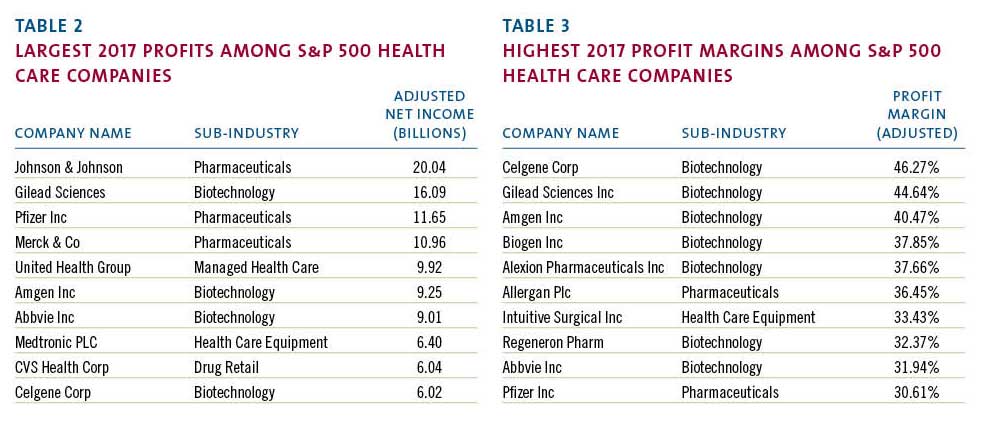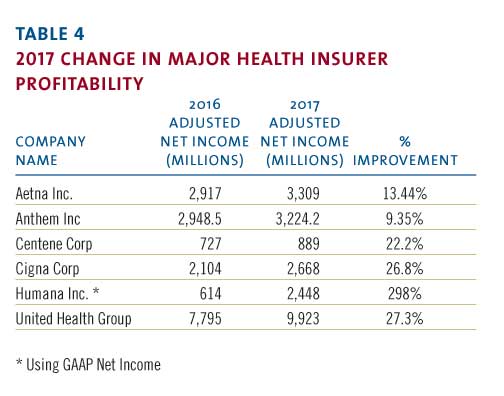Tuesday, July 17, 2018
Recovery Radio:Recovery Radio: Recovery Ready Communities
Blog: Recovery Radio
Post: Recovery Radio: Recovery Ready Communities
Link: http://recovery.enlightenradio.org/2018/07/recovery-radio-recovery-ready.html
--
Powered by Blogger
https://www.blogger.com/
Monday, July 16, 2018
Recovery Radio:Recovery radio -- Medically assisted Treatment
Blog: Recovery Radio
Post: Recovery radio -- Medically assisted Treatment
Link: http://recovery.enlightenradio.org/2018/07/recovery-radio-medically-assisted.html
--
Powered by Blogger
https://www.blogger.com/
The Real Driver of Health Care Spending
|
Harpers Ferry, WV
Saturday, July 14, 2018
THE ECONOMIC CONSEQUENCES OF TRUMP’S TRADE WAR
ERKELEY – US President Donald Trump's phony, blowhard's trade war just got real.

THE ECONOMIC CONSEQUENCES OF TRUMP'S TRADE WAR
Jul 12, 2018 BARRY EICHENGREEN asks why the effect of escalating protectionism on investment and financial markets has been so limited.
10Add to BookmarksThe steel and aluminum tariffs that the Trump administration imposed at the beginning of June were important mainly for their symbolic value, not for their real economic impact. While the tariffs signified that the United States was no longer playing by the rules of the world trading system, they targeted just $45 billion of imports, less than 0.25% of GDP in an $18.5 trillion US economy.
On July 6, however, an additional 25% tariff on $34 billion of Chinese exports went into effect, and China retaliated against an equivalent volume of US exports. An angry Trump has ordered the US trade representative to draw up a list of additional Chinese goods, worth more than $400 billion, that could be taxed, and China again vowed to retaliate. Trump has also threatened to impose tariffs on $350 billion worth of imported motor vehicles and parts. If he does, the European Union and others could retaliate against an equal amount of US exports.
We are now talking about real money: nearly $1 trillion of US imports and an equivalent amount of US export sales and foreign investments.
The mystery is why the economic and financial fallout from this escalation has been so limited. The US economy is humming along. The Purchasing Managers' Index was up again in June. Wall Street has wobbled, but there has been nothing resembling its sharp negative reaction to the Smoot-Hawley Tariff of 1930. Emerging markets have suffered capital outflows and currency weakness, but this is more a consequence of Federal Reserve interest-rate hikes than of any announcements emanating from the White House.
There are three possible explanations. First, purchasing managers and stock market investors may be betting that sanity will yet prevail. They may be hoping that Trump's threats are just bluster, or that the objections of the US Chamber of Commerce and other business groups will ultimately register.1
Second, the markets may be betting that Trump is right when he says that trade wars are easy to win. Other countries that depend on exports to the US may conclude that it is in their interest to back down. In early July, the European Commission was reportedly contemplating a tariff-cutting deal to address Trump's complaint that the EU taxes American cars at four times the rate the US taxes European sedans.But this ignores the fact that Trump's tariff talk is wildly popular with his base. One recent poll found that 66% of Republican voters backed Trump's threatened tariffs against China. Trump ran in 2016 on a protectionist vow that he would no longer allow other countries to "take advantage" of the US. His voters expect him to deliver on that promise, and he knows it.
But China shows no willingness to buckle under US pressure. Canada, that politest of countries, is similarly unwilling to be bullied; it has retaliated with 25% tariffs on $12 billion of US goods. And the EU would contemplate concessions only if the US offers some in return – such as eliminating its prohibitive tariffs on imported light pickup trucks and vans – and only if other exporters like Japan and South Korea go along.
Third, it could be that the macroeconomic effects of even the full panoply of US tariffs, together with foreign retaliation, are relatively small. Leading models of the US economy, in particular, imply that a 10% increase in the cost of imported goods will lead to a one-time increase in inflation of at most 0.7%.
This is simply the law of iterated fractions at work. Imports are 15% of US GDP. Multiply 0.15 by 0.10 (the hypothesized tariff rate), and you get 1.5%. Allow for some substitution away from more expensive imported goods, and the number drops below 1%. And if growth slows because of the higher cost of imported intermediate inputs, the Fed can offset this by raising interest rates more slowly. Foreign central banks can do likewise.
Still, one worries, because the standard economic models are notoriously bad at capturing the macroeconomic effects of uncertainty, which trade wars create with a vengeance. Investment plans are made in advance, so it may take, say, a year for the impact of that uncertainty to materialize – as was the case in the United Kingdom following the 2016 Brexit referendum. Taxing intermediate inputs will hurt efficiency, while shifting resources away from dynamic high-tech sectors in favor of old-line manufacturing will depress productivity growth, with further negative implications for investment. And these are outcomes that the Fed cannot easily offset.
So, for those who observe that the economic and financial fallout from Trump's trade war has been surprisingly small, the best response is: just wait
Harpers Ferry, WV
Friday, July 13, 2018
In Latest ACA Sabotage, Administration Nearly Eliminates Marketplace Enrollment Assistance Funds [feedly]
https://www.cbpp.org/blog/in-latest-aca-sabotage-administration-nearly-eliminates-marketplace-enrollment-assistance-funds
The Trump Administration this week slashed funding for consumer enrollment assistance and outreach through the Affordable Care Act (ACA) navigator program. The funding cuts, and other changes to the program, will reduce access to crucial assistance that helps consumers make informed decisions about their insurance and sign up for and maintain comprehensive coverage – yet another in the Administration's efforts to weaken the ACA.
The latest cut reduces funding for the navigator program to just $10 million for the 34 states whose ACA marketplaces are facilitated by the federal government. Combined with the large cut last year, navigator funding has now fallen more than 80 percent from its 2016 level.
Navigators raise awareness about the availability of ACA coverage and subsidies, help vulnerable and hard-to-reach communities complete complex eligibility and enrollment processes, assist people with grievances, and connect people to other resources, such as tax experts, as needed.
The Centers for Medicare & Medicaid Services (CMS) makes three flawed arguments to justify slashing navigator funding.
- First, it claims that the need for navigators has "diminished" as the ACA marketplaces have become more visible and familiar. In fact, outreach remains critical in building awareness among people who could benefit from marketplace coverage, research shows. For example, 35 percent of uninsured adults didn't know about the ACA marketplaces in the fall of 2017 and an earlier survey found that nearly half of uninsured adults didn't know about marketplace financial assistance, even though many would likely qualify.
Second, CMS argues that the navigator program is inefficient, based on a misleading metric. The metric, which finds a relatively high program cost per person enrolled, focuses only on marketplace enrollments completed by navigators. It ignores navigators' other duties, including raising awareness about coverage more broadly. That often results in enrollment in the marketplace by consumers completing the process on their own or enrollment in other programs like Medicaid or the Children's Health Insurance Program (CHIP) that the CMS metric doesn't capture.
CMS unfairly compared navigator performance to that of agents and brokers using this metric. The metric likely undercounts the enrollments completed by navigators because it links enrollments to navigators using identification numbers that, up to last year, most navigators believed were optional to provide and that they have received little or no training in using. By comparison, insurance agents and brokers have long routinely used identification numbers to ensure they are compensated for work they've completed to enroll consumers.
In addition, navigators' enrollment counts may be lower than typical insurance brokers' because they work with hard-to-reach and vulnerable populations — including people who live in rural areas, have limited access to the Internet, have limited English proficiency, or have disabilities or other special needs — who often take more time to assist and may have complex eligibility or coverage questions.
- Third, CMS suggests that agents and brokers reimbursed by health insurers can replace navigators. But navigators differ from agents and brokers in that they are required to provide fair and impartial information about health plan options, rather than promoting particular options. They also provide services that agents and brokers generally don't, such as making referrals for individuals to get appropriate assistance if they have a grievance related to their coverage, helping eligible individuals enroll in Medicaid or CHIP, and assisting people in resolving eligibility inconsistencies when their application does not match federal data records.
Unfortunately, CMS also indicates that it seeks to interfere with navigators' impartial role by pushing them to promote limited-benefit coverage options, "such as association health plans, short-term, limited-duration insurance, and health reimbursement arrangements." As we've explained, such plans can leave consumers exposed to significant financial risk if they become ill or injured, and the proliferation of such plans will result in higher costs for people needing comprehensive coverage.
Finally, the funding announcement, building on an earlier CMS rule, opens the door to other significant changes that may leave consumers in some states without access to in-person, marketplace-funded assistance. The CMS rule changed the parameters for navigator program design, no longer requiring that they have a physical presence in the state they serve or that at least one navigator group in a state be a community-based non-profit focused on vulnerable populations.
Building on these changes, CMS encourages a single group to apply as the navigator organization serving multiple states. It claims that there's less need for face-to-face assistance, and it encourages navigator groups to present "less resource-intensive" outreach and enrollment strategies, like relying on virtual or mobile assistance to consumers. But some consumers — often including the vulnerable populations that navigators have designed their programs to serve — continue to need and seek in-person help.
The dramatic cut in navigator funding and other changes to the program will weaken navigators' effectiveness and ultimately reduce the viability of community-based enrollment and outreach programs tailored to each state's diverse populations. As a result, fewer people will get the impartial assistance they need to enroll in and maintain coverage.
-- via my feedly newsfeed
Chart of the Week: An Answer to the U.S. Wage Puzzle [feedly]
https://blogs.imf.org/2018/07/10/chart-of-the-week-an-answer-to-the-u-s-wage-puzzle/
By Yasser Abdih
July 10, 2018

Hiring is strong, but workers still aren't seeing big raises (photo: Kutay Tanir/Getty Images by iStock).
Wages in the US have grown slowly in recent years, even as the unemployment rate has fallen to the lowest levels in decades. This is puzzling. Economic theory and common sense suggest that companies competing for a shrinking pool of available workers would have to raise wages as the labor market tightens.
What explains stagnant wage growth, then? The Chart of the Week, based on our new study, offers a plausible answer: slower growth in labor productivity—the amount of goods or services produced in an hour of work—and a decline in the share of income that goes to workers. Both have held wages down, overcoming the positive impact of a declining unemployment rate.
The chart shows that worker compensation (the red line) has increased just 2 percent or so each year, on average, since the Great Recession, down from 3½ percent in the eight years before. That's barely keeping up with expected inflation—the blue bars—even though unemployment, or "slack," has diminished, as indicated by the black bars.
How productive workers are is a key factor for employers when making compensation decisions.
A key explanation lies in slower labor productivity growth, as depicted by the orange bars. How productive workers are is a key factor for employers when making compensation decisions. If workers aren't producing as much, employers need to restrain pay growth to sustain profitability.
Another factor that has held down wage growth is a falling share of income that is paid to workers (the green bars). In an earlier study, we examined the reasons behind this decline and found that the bulk of the effect came from changes in technology that are linked to the automation of routine tasks, followed by import penetration.
The role of slowing productivity growth underscores the importance of policies to encourage investment and innovation while facilitating the movement of capital and labor toward their most productive uses.
Policies also need to foster systems for continuous retooling and upgrading of worker skills. Although education and training programs would not immediately address the short-term adjustment costs for affected workers, over time they could enhance the resilience of employment and productivity of labor. Investing in education and training programs outside traditional channels could prepare future workers to keep up with technological progress and global competition.
Related links:
Understanding U.S. Wage Dynamics
What Explains the Decline of the U.S. Labor Share of Income? An Analysis of State and Industry Level Data
Technology and the Future of Work
-- via my feedly newsfeed
Krugman: Brexit Meets Gravity [feedly]
https://www.nytimes.com/2018/07/10/opinion/brexit-meets-gravity.html
Anyway, as Britain's self-inflicted Brexit crisis (self-inflicted with some help from Putin, it seems) comes to a head, it seems to me worth trying to explain some aspects of the economics involved that should be obvious – surely are obvious to many British economists – but aren't, apparently, as obvious either to Brexiteers or to the general public.
These aspects explain why Theresa May is trying to do a soft Brexit or even, as some say, BINO – Brexit In Name Only; and why the favored alternative of Brexiteers, trade agreements with the United States and perhaps others to replace the EU, won't fly.
Now, many of the arguments for Brexit were lies pure and simple. But their claims about trade, both before and after the vote, may arguably be seen as misunderstandings rather than sheer dishonesty.
ADVERTISEMENT
In the world according to Brexiteers, Britain needn't lose much by leaving the EU, because it can still negotiate a free trade agreement with the rest of Europe, or, at worst, face the low tariffs the EU imposes on other non-EU economies. Meanwhile, Britain can negotiate better trade deals elsewhere, especially the US, that will make up for any losses on the EU side.
What's wrong with this story? The first thing to understand is that the EU is not a free trade agreement like NAFTA; it's a customs union, which is substantially stronger and more favorable to trade.
What's the difference? In NAFTA, most Mexican products can enter the U.S. tariff-free. But Mexico and the U.S. don't charge the same tariffs on imports from third parties. This means that Mexican goods entering the U.S. still have to face a customs inspection, to make sure that they're actually Mexican, not, say, Chinese goods unloaded in Mexico and trucked across the border to bypass U.S. tariffs.
And actually it's worse than that, because what is a Mexican good, anyway? NAFTA has elaborate rules about how much Mexican content is required to qualify for zero tariffs, and this adds a lot of paperwork and frictions to intra-NAFTA trade.
By contrast, the EU sets common external tariffs, which means that once you're in, you're in: once goods are unloaded at Rotterdam they can be shipped on to France or Germany without further customs checks. So there's much less friction.
EDITORS' PICKS
Silicon Valley's Giants Take Their Talent Hunt to Cambridge
'Shaken' Rosenstein Felt Used by White House
What It Costs to Be Smuggled Across the U.S. Border
ADVERTISEMENT
And frictions, not tariffs, are what businesses are complaining about as Brexit draws near. For example, the British auto industry relies on "just-in-time" production, maintaining low inventories of parts, because it has been able to count on prompt arrival of parts from Europe. If Britain leaves the customs union, the risk of customs delays would make this infeasible, substantially raising costs.
These frictions are also why estimates of the cost of Brexit are comparable to estimates of the cost of a global tariff war, even though the predicted reduction in trade volumes is much smaller.
Still, even if leaving the customs union would be costly, couldn't Britain make up for that by getting a really good deal with Donald Trump's America? No.
Certainly the U.S. couldn't offer hugely valuable tariff reductions, for the simple reason that our tariffs on EU products – like EU tariffs on our products – are already quite low. You can find examples of high tariffs, like our 25 percent tariff on light trucks, but overall there just isn't much to give.
What about a Britain-U.S. customs union? That would be hugely problematic, among other things because given the asymmetry in size Britain would effectively be giving Washington complete control over its policy. Beyond that, no deal with the U.S. could be worth as much as Britain's customs union with its neighbors, because of gravity.
What? One of the best-established relationships in economics is the so-called gravity equation for trade between any two countries, which says that the amount of trade depends positively on the size of the two countries' economies but negatively on the distance between them. You can see this very clearly in British exports. Here's British exports to selected countries as a percentage of the importing country's GDP, plotted against the distance to that country:

The point is that while America offers a market comparable in size to that of the EU, it's much further away, so that even if the UK could make an incredible deal with us, it wouldn't be worth nearly as much as the customs union they have.
All of this explains why May is trying to negotiate a deal that keeps the customs union intact. But that, of course, ain't much of an exit: Brussels will still set UK trade policy, except that Britain will no longer have a vote. So what was the point of Brexit in the first place?
Good question. Too bad more people didn't ask it before the referendum.
-- via my feedly newsfeed
West Virginia GDP -- a Streamlit Version
A survey of West Virginia GDP by industrial sectors for 2022, with commentary This is content on the main page.
-
John Case has sent you a link to a blog: Blog: Eastern Panhandle Independent Community (EPIC) Radio Post: Are You Crazy? Reall...
-
---- Mylan's EpiPen profit was 60% higher than what the CEO told Congress // L.A. Times - Business Lawmakers were skeptical last...
-
via Bloomberg -- excerpted from "Balance of Power" email from David Westin. Welcome to Balance of Power, bringing you the late...





